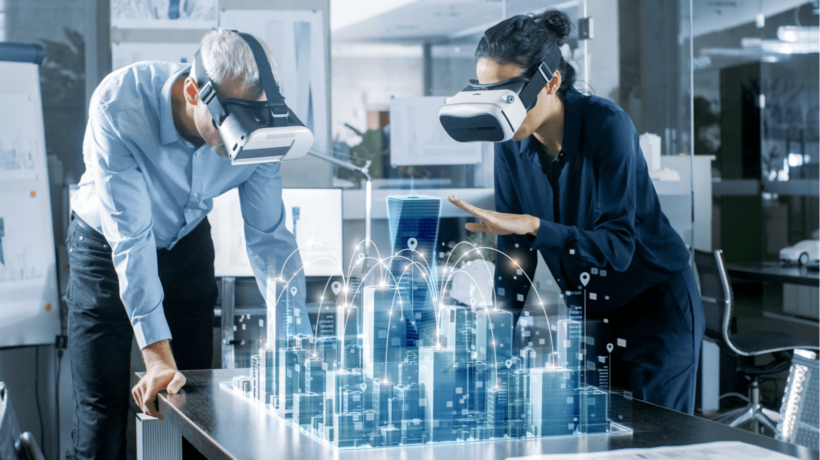The Learning Paradigm In Corporate Training Trends For 2016
When it comes to professional services, Deloitte is a firm whose results you can rely on. It co-operates closely with the leading companies and corporations, and this co-operation lays the groundwork for their analytic report analyzing the current situation. Here are the key ideas and trends the firm’s latest report, Global Human Capital Trends 2016, touches upon, as well as the new learning paradigm shift it suggests.
Lately, executives and leaders of many companies began to realize that quality learning provided in the workplace environment is one of the few factors that can help attract valuable candidates, make working in the company more engaging, and help retain talent.
The Need For A Learning Paradigm Shift
The ubiquity of various mobile devices featuring round-the-clock internet access makes learning an activity one can participate in anywhere, anytime. These days, you can learn anything online. One can easily find a video or a podcast on any topic, created by the leading professionals in the field, and obtain new skills –or even an academic degree– without leaving one’s desk, or while drinking coffee in a café.
In turn, the employees now understand better than ever that their pay grade is very much related to their learning curve, and demand the employer to provide the ability for dynamic learning in the workplace. The members of the new generation, accustomed to a self-directed learning environment, see individual learning on the job as an integral part of their day-to-day employment activity, and companies that fail to recognize that are at risk of losing their best employees.
The attitude towards learning is gradually changing. It is no longer considered an episodic activity, mostly taking place during the onboarding stage. The new learning paradigm places the employee in the spotlight, and turns learning into a constant, continuous process. Companies that embrace this new concept of learning aim to give their employees access to a wide range of resources, both internal and public, which allows for individualized studying programs, instead of pushing standardized courses upon every employee.
The New Learning Paradigm
The new learning paradigm places the following responsibilities upon training departments:
- Help employees “learn how to learn”.
- Organize events and programs in order to stimulate knowledge sharing among staff.
- Develop user-friendly, easy to use learning portals and video sharing services.
- Promote collaboration between employees, enabling continuous learning and knowledge sharing.
Despite the general understanding of the necessity to provide self-learning opportunities, 61 percent of employers report having difficulties with it.
Due to the new goals set before corporate training departments, they gradually drift away from their traditional “course builder” role. Now, their responsibilities are more like that of product managers, who work to satisfy the unmet demands of their “clients”.
Bringing about the evolution of corporate training is a complex and demanding task, and most companies and organizations are still in the early stages of implementing new techniques and restructuring their training departments. However, the trend is clear: Companies that care about their employees’ self-learning must assist them in acquiring the necessary skills and knowledge using both internal and public sources, and if your organization has not yet given this matter any thought, now is a fine time to start.
Transforming Your Learning Processes: 5 Recommendations
In conclusion, we’d like to offer a few recommendations that will help you begin evolving the training processes in your organization:
1. Acknowledge That Every Employee Knows Best In Which Direction To Take Their Learning.
Companies interested in stimulating the professional growth of employees must look for ways of improving the user experience of their educational programs and initiatives. Treat employees as customers, whose needs must be met, instead of students that must be pushed through standardized classes.
2. Reject Top-Down Education In Favor Of Bottom-Up.
The transition to the student-centered model of education demands a significant mental shift within the organization. Relinquishing total control over the educational content, schedule, and the choice of learning platforms is hard, but it is necessary for transitioning to the new paradigm, and is rewarded with the improved learning efficiency.
3. Use Technology To Direct Your Employees’ Self-Learning.
Mobile, social, and cloud platforms providing services related to self-learning must become an integral part of your new learning programs. Good learning platforms enable you to integrate all types of content, and give both students and trainers a handy way of managing learning content and adding to it. Keep an eye on innovational offerings from vendors new to the market to keep your learning environment in top shape.
4. Adopt The Continuous Education Model.
Foster a corporate culture that gives employees access to the necessary educational resources at any stage of their career.
5. Choose The Learning Paradigm That Supports An Extended Development Vision.
Consider the meaning of the word “development” and the vision of an employee’s professional growth within your organization. If no such vision exists, you need to create it and communicate it to all employees.









